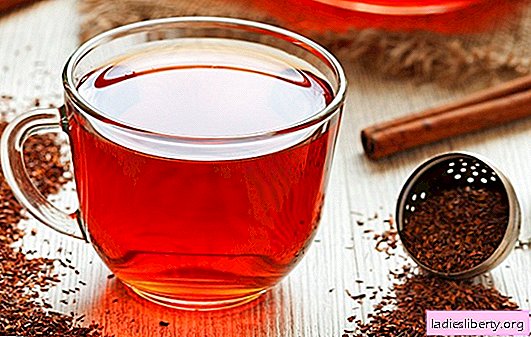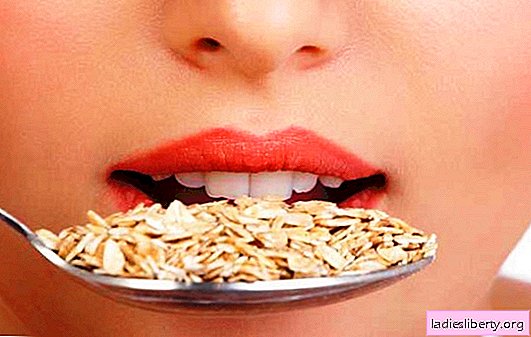
Since ancient times, the brick-red drink used by African Bushmen - rooibos or, as it is also called, rooibos has become familiar to Europeans since the beginning of the twentieth century. Today, it remains the main tonic drink in South Africa, what ordinary tea or coffee is considered to be among us, and is gaining popularity in the world.
Linear Aspalatus
Dried and chopped leaves and shoots of this particular plant are used to brew a drink. And the name rooibos means a red bush. The bush is actually not red, but quite ordinary - green, 1-1.5 meters in height, with leaves similar to needles. Since the mid-twentieth century, the plant has been cultivated on an industrial scale, mainly on the west coast of South Africa. And the raw material from the aspalatus becomes red, or rather red-brown, after fermentation and drying.
The first to collect and brew rooibos were the Hottentots, the indigenous inhabitants of the territory on which modern South Africa and Namibia are located. Then, in the nineteenth century, visiting Dutch and English learned about it. So rooibos came to Europe and soon spread throughout the world due to its properties.
Rooibos. Useful qualities
A fragrant, brick-red hue, a sweet, tonic drink is a great alternative to tea or coffee, especially for those people who should not drink caffeine. Rooibos adherents also praise him for other healthy qualities. Many of them claim that the antioxidants contained in the drink can help protect against cancer, diseases of the cardiovascular system or stroke. However, contrary to some sources, rooibos is not a rich source of vitamins or minerals, except copper and fluoride. But first things first.
First of all, it must be emphasized that rooibos does not contain caffeine. Caffeine is a natural stimulant found in both black and green tea, as well as coffee. In general, the use of this substance in moderation is safe, even useful for increasing concentration, improving mood and physical endurance. However, caffeine abuse can cause a number of side effects. Among them: tachycardia, sleep disturbances, nervous disorders, dependence, etc. For this reason, some people prefer to avoid or limit the use of caffeine.
Since rooibos naturally does not contain it, it is a good choice for replacing tea or coffee. As a bonus - a low level of tannin in comparison with all types of tea.
Tannins are phenolic compounds that interfere with the absorption of certain nutrients by the human body, such as iron.
Also in rooibos, unlike tea, does not contain oxalic acid. It can cause kidney stones. Therefore, rooibos is so good for people with kidney problems.
Secondly, rooibos found quercetin and aspalatin. These are antioxidants. Thanks to these substances, rooibos has become so popular. Antioxidants can have health benefits, for example, protecting human cells from damage by free radicals. Which in the long run can cause diseases of the cardiovascular system and even cancer.
Important! It should be understood that rooibos may differ from each other depending on the processing method. There are green and red varieties. It is green to a greater degree that contributes to an increase in the level of antioxidants in the blood.
However, these antioxidants may be unstable or inefficiently absorbed by the body.
Thirdly, antioxidants can be beneficial for people with heart problems. The use of rooibos can have a beneficial effect on blood pressure by inhibiting the angiotensin-converting enzyme. There is also evidence that rooibos can improve cholesterol. According to studies, six cups of a drink per day, for six weeks, reduced the level of low-density "bad" cholesterol in men. High-density, “good,” cholesterol increased slightly.
Normal cholesterol is a prerequisite for resistance to various diseases of the cardiovascular system, including heart attacks and strokes.
As already noted, antioxidants can indirectly reduce the risk of cancer. In vitro studies have shown that quercetin and luteolin kill cancer cells and prevent tumor growth. But experiments on humans have not been conducted. And it is still unclear whether a small amount of two antioxidants is sufficient and how effectively they are absorbed by the body so that there is a positive dynamic.
Due to the lack of convincing evidence, the assumption of preventing cancer growth in humans can, in fact, be considered a theory.
Interestingly, the compounds in rooibos can also help people with type 2 diabetes. Again antioxidants enter the battle. This time, aspalatin. Experiments have shown that aspalatin helps balance the blood sugar level in mice and decreases insulin resistance. This is good news for diabetics, but no human studies have been done.
Bushmen in Africa still use rooibos to treat colic in young children.
Harm from rooibos
Rooibos is generally safe. Any unwanted or unpleasant effects are extremely rare and are insignificant. For example, mild estrogenic activity. So weak that the average person will not even notice it. However, perhaps it will interfere with some, of course, if you drink the drink in large quantities. But the fact that a quality rooibos costs more than a good black or green tea can be a deterrent to abuse for most people.
Brewing
The process is very simple and not much different from brewing regular tea. Porcelain, simple ceramic or glassware is best. Clay teapots or cups are better not to use, since useful substances are absorbed by the pores of the material. An exception may be dishes that are covered with glaze. Dosage, as for tea, one or two teaspoons per cup. Rooibos is poured with boiling water, and it also tolerates boiling well. Many recommend placing cookware in the oven or boiling on a stove. Herbal tea is infused for at least five minutes, after which it is ready for use.
Advice! When boiling, use heat-resistant cookware. It is preferable to heat in the oven, but it is possible on an electric stove, if the gas stove, use a divider.
The leaves of rooibos are like needles, they are very dense and the process of extraction of nutrients takes some time. For this reason, rooibos can be brewed several times. It often happens that the second brewing gives a richer drink than the first. Some people add sugar to it, milk to taste or mix with other herbs. It was also invented "espresso from rooibos", prepared in a coffee machine, and then red cappuccino and latte, including ice. In general, experiment.
As you can see, rooibos is still an ambiguous source of health, but at the same time it is simply delicious, it quenches thirst well and many people have enough. Drink the drink in moderation, and positive effects, as well as a good mood, are guaranteed.











